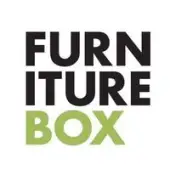Must-Have Inventory Planning System for Furniture Businesses
Get my demo
Stay ahead with smarter furniture inventory management
The combination of unpredictable customer demand and volatile supply chains has been the downfall of many furniture recently.
But there is a solution.
Inventory Planner reliably predicts customer demand, telling you exactly what to buy and when to buy it, so you can rapidly adjust to market shifts before it’s too late.
Features furniture retailers need
1
Forecast accurately, buy confidently
Stay ahead of the curve by knowing exactly which products your customers are likely to buy (and in what quantities). Inventory Planner constantly analyzes demand and trends, then offers reliable buying recommendations (down to the last unit).
2
Add in flexibility to supply shifts
Avoid excess inventory that arrives at the wrong time and kills cash flow.Take rapid action when lead times change – at SKU, product category, brand, vendor and warehouse level – and. adjust ideal stock cover days for items in short supply.
3
Liquidate slow-movers to release cash
The value of a furniture merchant’s inventory is often higher than most, which means bigger risk. See the associated cost of overstock, so you can quickly identify cash-drainers and liquidate them to release cash.
4
Easily plan inventory for assemblies
Get buying recommendations at component level based on reliable demand forecasts. Factor in each component’s stock level and supply time, so you always have everything you need on hand.
5
Optimize your warehouse and shipping container space
When you’re buying bulky inventory like furniture, space is a key consideration. Scale your purchase orders to max out warehouse space or weight available in containers, reducing the unit shipping cost of each item.
6
Cash-boosting metrics
See 200+ meaningful inventory metrics and key marketing data from Google Analytics so you can make profit-boosting decisions (such as when to merchandize items differently).
7
Plan your purchasing budgets
Ensure you have enough buying budget available. Inventory Planner’s Open-to-Buy (OTB) feature lets you plan by month or retail weeks, based on key metrics such as previous years’ revenue, expected margins and units (based on retail price).
8
Easy multi-location inventory planning
Get forecasts, buying recommendations and warehouse transfer suggestions so you can optimize your inventory levels across multiple locations before ordering new stock.
9
Time-saving PO management
Save time and money by placing purchase orders directly from your buying recommendations. Pre-set all your supplier information such as currency, minimum order quantity and payment terms so they can be automatically applied.
See exactly how much excess inventory you have
Instant interactive tour
Faq
Frequently Asked Questions
Easy integrations
Connect your platforms
in 1, 2, 3…
Seamlessly sync almost any data, from any source, to get customizable, reliable insights that are always up-to-date and all in one place.
Brightpearl
ERP
Sage
Accounting
